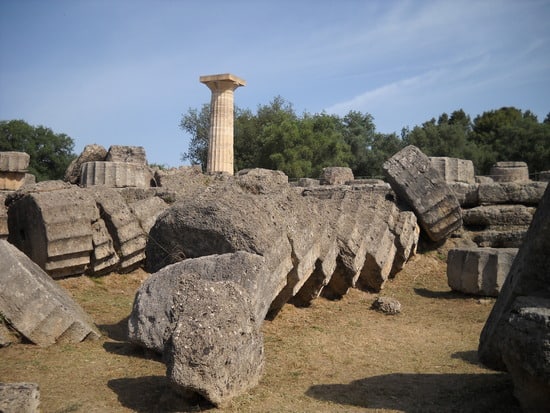Alternate Title: “What happens if a pillar falls in the woods and no one hears it . . . ”
Former Chief Dale Bosworth had his Four Threats: fire and fuels, invasive species, loss of open space, and unmanaged recreation. Current (but for how long?) Chief Tidwell’s signature initiative was to be his “Four Pillars”: Restore and Sustain Landscapes, Protect and Enhance Water Resources, Jobs and Sustainable Communities, and Climate Change Resiliency.
But Tidwell’s pillars have fallen before construction even began because he wasn’t paying attention to one minor detail. His boss, Secretary of Agriculture Vilsack, already had “Four Pillars” — renewable energy, broadband internet access, responding to climate change and harnessing local food production.
Your Forest Service leadership hard at work.

Aside from the obvious confusion with the USDA’s message, there are more fundamental problems with the language of the FS’s 4 pillars. The first 2 seem to be about the mission of the agency to protect, restore, enhance landscapes and water. The second 2 seem to be about outcomes from doing the first 2– sustainable communities and climate-change resilient ecosystems. The priority actions associated with the 4 pillars are all good things but I’m getting confused about what is part of the mission and what is a vision. E.G., providing jobs and contributing to sustainable human communities are good things, but where in law are these a mission of the Forest Service? Maybe I’m confused about them because they apply not just to national forests but to S&PF and Research as well. I suspect that the public and FS employees are confused as well. As far as National Forests, any future pillars will need to be built on a solid foundation crafted from a shared vision (both internally and externally) of what national forests are all about. That doesn’t really exist now.
Jim- I am thinking that perhaps MUSYA implies that uses are a good thing (implicitly because of jobs and sustainable rural communities)?
Also “Strategic Goal 3: Support Increased Economic Opportunities and Improved Quality of Life in Rural America” is part of the USDA strategic plan found here.
Sharon,
One of my concerns here regards creating an expectation that the Agency MISSION is to sustain rural communities. Certainly, the Forest Service can help do that by ensuring that ecosystems are sustained but the Agency is not responsible for keeping communities solvent. There is a certain long-standing sense of entitlement regarding this in some parts of the West.
Yes I know that Federal lands are not part of the local tax base. That’s why we have PILT and Secure Rural School payments, etc. Unfortunately, in the past, many national forests fostered unreasonable expectations about resource extraction levels that ultimately couldn’t be sustained.
Jim, I don’t think that feeling of entitlement can be applied broadly across use groups.. it seems to be a vestige of the old timber wars.
I thought we were trying to operate at the intersection of social economic and ecological sustainability..but maybe I am stuck in the mindset of a previous planning rule..
Some of us are still working on the 4 Threats from a few Chiefs ago. Is it really necessary for each and every new Chief to have a ‘new’ message? The Forest Service does not seem to be very successful with communicating clearly to the public as it is. I’m not sure changing what we’re communicating every few years is going to make that any better. Seems likely to confuse people.
It would be great if the current Chief would adopt the last few Chiefs’ threats/opportunities by providing focused support for ongoing programs that are still working to make headway in these areas. Instead it seems that with each new Chief’s initiative, program funds are taken away from previous chiefs’ initiatives that are still in progress.
I wasn’t even aware that there are 4 pillars, and it took me a good three years to figure out what the 4 threats were. Either I’m slow or don’t pay alot of attention to what is coming out of the Washington Office. Most if not all of it seems to be politcally driven and ends up being a PITA for folks on the ground.
I agree and didn’t intend to apply broadly across user groups.
Under Jack Ward Thomas’s chiefdom, social and economic sustainability were depicted as dependent upon ecological sustainability. Significantly, under a new administration and chief, ecological sustainability was demoted to co-equal status with the other 2 realms of sustainability. A new planning rule, if we ever actually get one in place, will need to acknowledge that economic and social sustainability depend upon ecological sustainability– we can’t have economics or societies without a place to live. The 3 intersecting circles as a depiction of sustainability don’t properly diagram it this way.